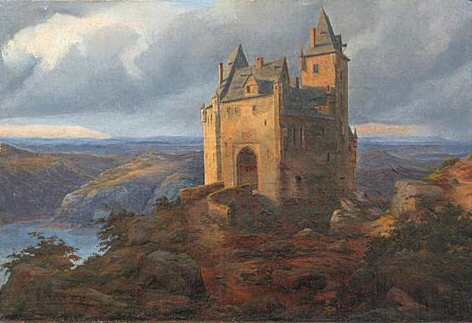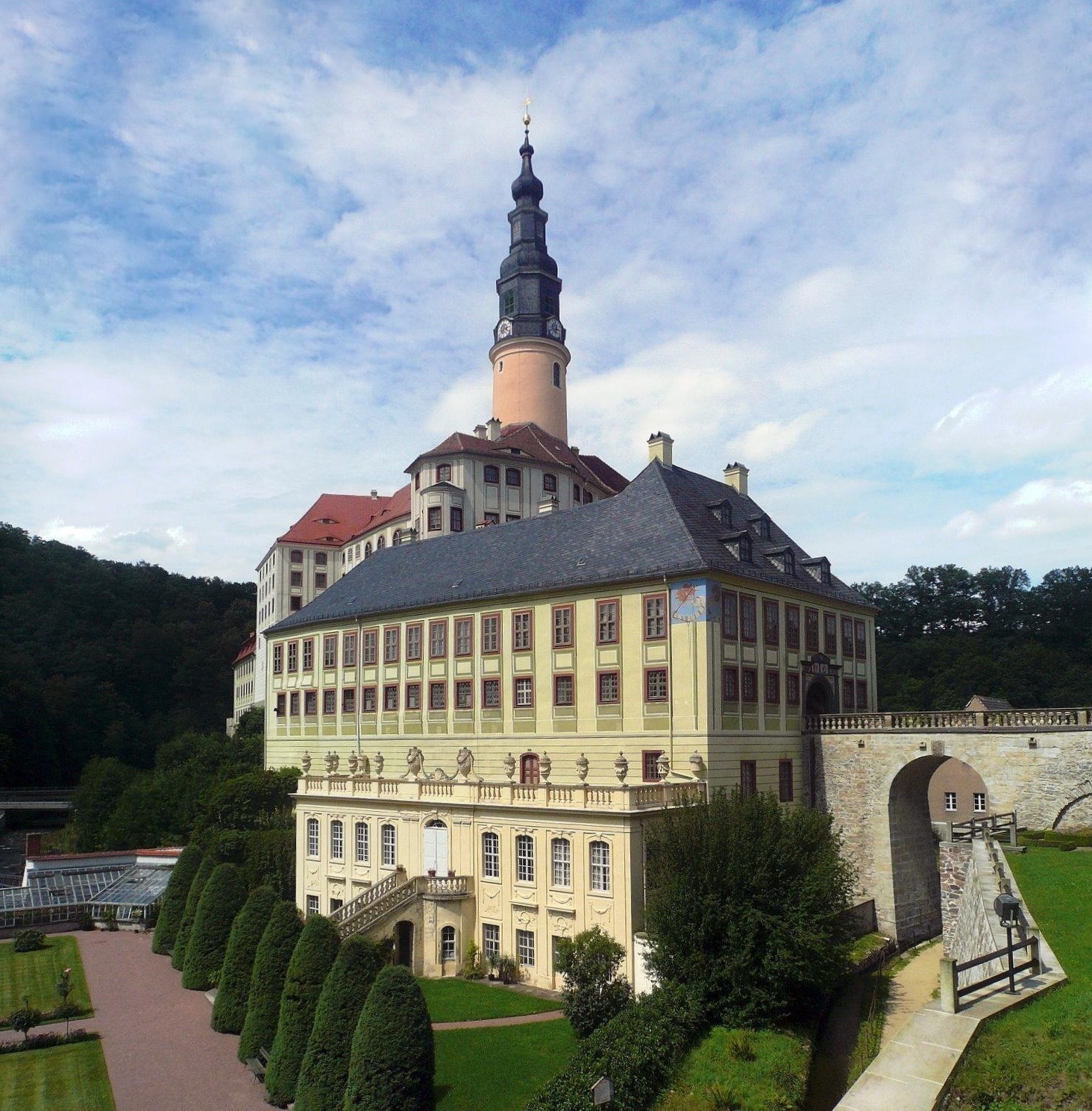|
State Palaces, Castles And Gardens Of Saxony
The State Palaces, Castles and Gardens of Saxony (german: Staatliche Schlösser, Burgen und Gärten Sachsen) is a state-owned company with its head office in Dresden. It belongs to the Saxon State Ministry of Finance and has the aim of preserving Saxon cultural heritage whilst respecting culture, cultural and architectural conservation, conservation needs. The state-owned company manages several palaces, castles and parks in the Saxony. These include the Zwinger (Dresden), Zwinger in Dresden, the Albrechtsburg in Meissen and Kriebstein Castle. History Following the restoration of the Free State of Saxony on 3 October 1990, assets that had already been owned in the past by the state, or which had been managed during the East German era as legal entities under the Asset Allocation Act, were transferred into the ownership of the new German state. Starting on the first of January 1992, the state took over the following properties: Dresden Castle including the Johanneum (Dresden), Joh ... [...More Info...] [...Related Items...] OR: [Wikipedia] [Google] [Baidu] |
Burg Kriebstein
Kriebstein Castle (german: Burg Kriebstein) is a castle in Kriebstein near the town of Waldheim in the German state of Saxony. Location The castle rises above steep crags over the River Zschopau. Within the topographical grouping of hill castles it is classified as a spur castle because it lies on the extreme end of a hill spur surrounded on three sides by the Zschopau that flows around the spur in a large bow. Layout The rock on which the castle stands is separated from rising ground behind it by a man-made section of ditch, the so-called ''Halsgraben''. Typologically the Kriebstein is a combination of a tower castle (''Turmburg'') and a ringwork castle (''Ringburg'') with an oval ground plan. Dominating the whole site is the monumental keep perched atop the highest crag. With its sides measuring 22 x 12 metres, the tower, including its weather vane, reaches a height of 45 metres. Its late medieval oriel turrets and the flèche give the castle a unique and thus unmistakab ... [...More Info...] [...Related Items...] OR: [Wikipedia] [Google] [Baidu] |
Schloss Weesenstein
Schloss Weesenstein is a ''Schloss'' located in , a small village, part of Müglitztal in the Müglitz (river), Müglitz river valley, around south of Dohna in Saxony, Germany. History A castle was erected here sometime around 1200, built with the purpose of defending the border to the Kingdom of Bohemia; it was mentioned in written sources for the first time in 1318. The oldest part of the presently visible castle is its keep, central round tower, erected sometime around 1300. The castle was built for the burgraves of Dohna; the burgraviate was incorporated in the Margraviate of Meissen in 1400 and in 1406 the castle was transferred by the margrave to the von Bünau family in gratitude for their support in the Dohna Feud. The Bünau family transformed the defensive castle into a residential ''Schloss'' in 1526–1575, and successive generations expanded and reconfigured the ''Schloss'' in stages. It continued to be the main seat of the family for about 350 years. As a consequence ... [...More Info...] [...Related Items...] OR: [Wikipedia] [Google] [Baidu] |
Pegau
Pegau () is a town in the Leipzig district in Saxony, Germany, situated in a fertile plain, on the White Elster, 18 m. S.W. from Leipzig by the railway to Zeitz. It has two Evangelical churches, that of St. Lawrence being a fine Gothic structure, a 16th-century town-hall; a very old hospital and an agricultural school. In the 19th Century, its industries included the manufacture of felt, boots and metal wares. Rathaus The ''Rathaus'' (town hall) is located in the middle of the city and has a distinctive character. It was built from 1559 to 1561 by Paul Widemann and Hieronymus Lotter in the style of the German Renaissance. It is extremely similar to Leipzig's ''Altes Rathaus'' (built-in 1556/57), which Widemann and Lotter had previously worked on. The ''Rathausturm'' (town hall tower) can be climbed during the summer season. At a height of 30 meters, the tower offers a panoramic view in which the viewer can sometimes see to Leipzig. The town hall is the seat of the city admin ... [...More Info...] [...Related Items...] OR: [Wikipedia] [Google] [Baidu] |
Nossen Palace
Nossen ( hsb, Nosyn) is a town in the district of Meissen, in Saxony, Germany. It is located 80 km southeast of Leipzig. The town is dominated by a large Renaissance castle. Nossen is best known for its proximity to a motorway junction where the A14 merges onto the A4. Geography Neighboring towns Nearest towns are Roßwein, Großschirma, Reinsberg and Striegistal in Mittelsachsen districts and Käbschütztal, Lommatzsch and Klipphausen in the Meißen district. History During World War II, a subcamp of Flossenbürg concentration camp was located here. Historical population From 1995, recorded on 31 December, unless otherwise noted:Datenquelle ab 1998: Statistisches Landesamt Sachsen Personalities Sons and daughters of the city * Friedrich Funcke (1642-1699), clergyman, cantor and composer * Paul Richter (1859-1944), architect * Friedrich Wilhelm Quintscher (1883-1945), founder of the order and author, who came to Adonism * Manfred von Killinger (1886-194 ... [...More Info...] [...Related Items...] OR: [Wikipedia] [Google] [Baidu] |
Altzella Abbey
Altzella Abbey, also Altzelle Abbey (german: Kloster Altzella or ''Altzelle'', previously ''Cella'' or ''Cella Sanctae Mariae''), is a former Cistercian monastery near Nossen in Saxony, Germany. The former abbey contains the tombs of the Wettin margraves of Meissen from 1190 to 1381. The premises and gardens, surrounded by the precinct wall of the former monastery, and known as the ''Klosterpark Altzella'', are now maintained by the Schloss Nossen/Kloster Altzella Administration, and consist of a Romantic park, ruins and restored buildings, used for various cultural and religious functions, such as Corpus Christi processions. It also hosts conferences and private functions. History In 1162 Emperor Frederick I acquired 800 ''Hufen'' of cleared land from a monastery founded by Otto II, Margrave of Meissen, some of which was exchanged after the discovery of silver in 1168. In the following years,the foundation year is taken as 1170 - see Janauschek, ''Originum Cisterciensium ... [...More Info...] [...Related Items...] OR: [Wikipedia] [Google] [Baidu] |
Colditz Castle
Castle Colditz (or ''Schloss Colditz'' in German) is a Renaissance castle in the town of Colditz near Leipzig, Dresden and Chemnitz in the state of Saxony in Germany. The castle is between the towns of Hartha and Grimma on a hill spur over the river Zwickauer Mulde, a tributary of the River Elbe. It had the first wildlife park in Germany when, during 1523, the castle park was converted into one of the largest menageries in Europe. The castle gained international infamy as the site of Oflag IV-C, a prisoner-of-war camp during World War II for "incorrigible" Allied officers who had repeatedly attempted to escape from other camps. Original castle In 1046, Henry III of the Holy Roman Empire gave the burghers of Colditz permission to build the first documented settlement at the site. During 1083, Henry IV urged Margrave Wiprecht of Groitzsch to develop the castle site, which Colditz accepted. During 1158, Emperor Frederick Barbarossa made Thimo I "Lord of Colditz", and ma ... [...More Info...] [...Related Items...] OR: [Wikipedia] [Google] [Baidu] |
Muskau Park
Muskau Park (german: Muskauer Park, officially: ''Fürst-Pückler-Park Bad Muskau''; pl, Park Mużakowski) is a landscape park in the Upper Lusatia region of Germany and Poland. It is the largest and one of the most famous English gardens in Central Europe, stretching along both sides of the German–Polish border on the Lusatian Neisse. The park was laid out from 1815 onwards at the behest of Prince Hermann von Pückler-Muskau (1785–1871), centered on his Schloss Muskau residence. In July 2004, Muskau Park was added to the list of UNESCO World Heritage Sites (as a joint effort between Poland and Germany) because of its 'utopian' design that incorporates both native plants and the nearby town, and its influence on the development of landscape architecture. The park also stands as one of Poland's official Historic Monuments (''pomnik historii''), as designated May 1, 2004, and tracked by the National Heritage Board of Poland. Overview The park covers of land in Poland and ... [...More Info...] [...Related Items...] OR: [Wikipedia] [Google] [Baidu] |
Augustusburg Hunting Lodge
The hunting lodge of Augustusburg (german: Jagdschloss Augustusburg) was built from 1568 to 1572 above the town of the same name on a hill called the ''Schellenberg'' () on the northern edge of the Ore Mountains of Germany. The castle, which is visible from afar, is a local landmark. It lies about 12 kilometres east of the city of Chemnitz and about 21 kilometres southwest of Freiberg in the Free State of Saxony. In building a new castle, Prince Elector Augustus wanted not just to create a prestigious palace for his hunting trips, but also to underline his leading position in Central Germany. The immediate occasion for its construction was his victory in the Grumbach Brawl (). By enforcing the imperial ban on his Ernestine rivals – John Frederick the Middle and outlawed knight, Wilhelm von Grumbach, who sought refuge with John Frederick – the Albertine elector, Augustus, was able secure his supremacy over the Ernestines. He was also given the of Weida, Ziegenrück and A ... [...More Info...] [...Related Items...] OR: [Wikipedia] [Google] [Baidu] |
Burg Stolpen
Stolpen ( hsb, Stołpin) is a town in the district of Sächsische Schweiz-Osterzgebirge, in Saxony, Germany. It is a historical town, that grew at the foot of the ''Schloßberg'' with the castle ''Burg Stolpen''. Burg Stolpen Burg Stolpen is a castle built on top of the Schloßberg. The first defensive works were built about 1100 and it was first documented in 1222. Owned by the Bishop of Meißen for nearly 350 years, it passed to the Electorate of Saxony and was expanded in Renaissance style. In 1675 it was further expanded as a fortress. Anna Constantia von Brockdorff, Countess of Cosel, was imprisoned in the castle from 1716 until her death in 1765. The castle fell into disrepair towards the end of the 18th century. It became a museum in 1875, and has been partly restored since then. Schloßberg Schloßberg is a hill just to the south of the town formed of prominent basalt columns. It is the formation referred to by Georgius Agricola when he coined the term ''basalt''. ... [...More Info...] [...Related Items...] OR: [Wikipedia] [Google] [Baidu] |
Nischwitz Palace
Nischwitz is a German surname. Notable people with the surname include: * Andreas Nischwitz (born 1957), West German pair skater * Margarete Nischwitz (1891–1979), German political activist and politician * Ron Nischwitz (born 1937), American baseball player and coach * Theo Nischwitz (1913–1994), German cinematographer and special effects expert See also * Nischwitz Stadium, a baseball venue in Dayton, Ohio, United States {{surname German-language surnames ... [...More Info...] [...Related Items...] OR: [Wikipedia] [Google] [Baidu] |
Hubertusburg
Hubertusburg is a Rococo palace in Saxony, Germany. It was built from 1721 onwards at the behest of Augustus the Strong, Elector of Saxony and King of Poland, and after his death served as a residence of his son Augustus III. The 'Saxon Versailles' is chiefly known for the signing of the 1763 Treaty of Hubertusburg that ended the Seven Years' War. The palace is located in the municipality of Wermsdorf near Oschatz. History The extended Wermsdorf Forest had already been a hunting ground for the Wettin elector Augustus in the 16th century. A first Renaissance hunting lodge (''Jagdschloss'') in Wermsdorf was erected in 1609–10. From 1699 Augustus the Strong and his governor Prince Anton Egon of Fürstenberg held festive parforce hunts here, while their large entourage and the royal guests had to be accommodated in the village and at nearby Mutzschen Castle. During the feast of Saint Hubertus on 3 November 1721, Augustus the Strong commissioned a new palace that should serve ... [...More Info...] [...Related Items...] OR: [Wikipedia] [Google] [Baidu] |



.jpg)



